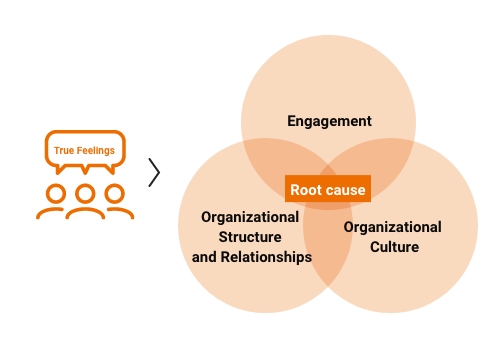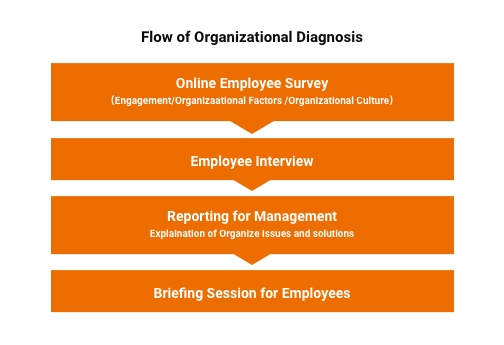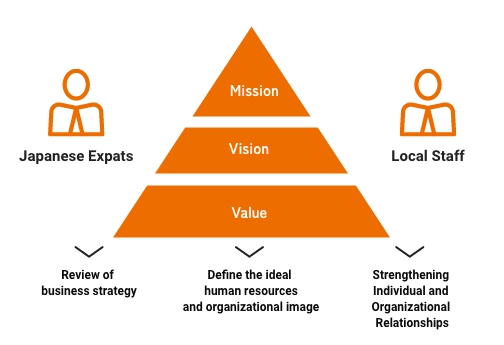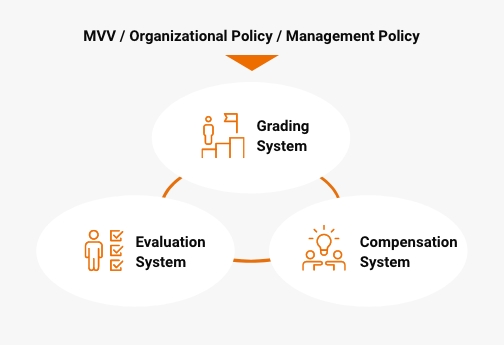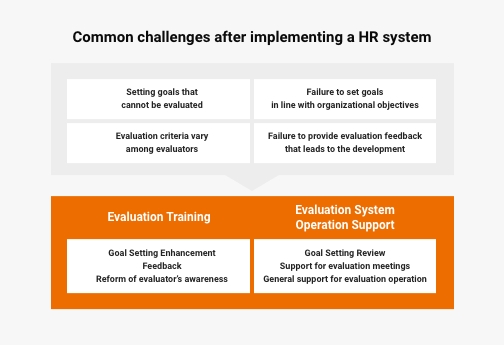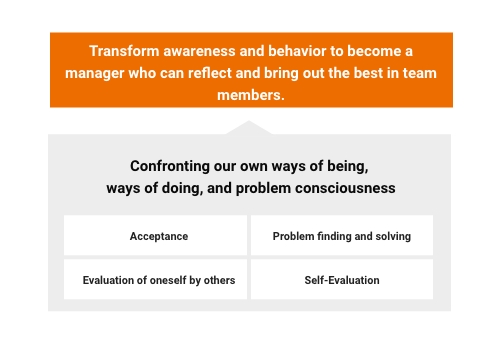Singapore
Big difference between Japanese and Singaporean values
Due to the fact that the Singaporean education system emphasizes a results-oriented approach, human resource management strategies similar to thoseused in Japan often do not work in Singapore.
Japanese business characteristics such as seniority-based thinking, communicating and behaving while reading between the lines, and generally unclear strategies are difficult to understand. The key to the growth and stability of the Singapore Branch is the ability to adopt human resource management strategies that are tailored to their needs.
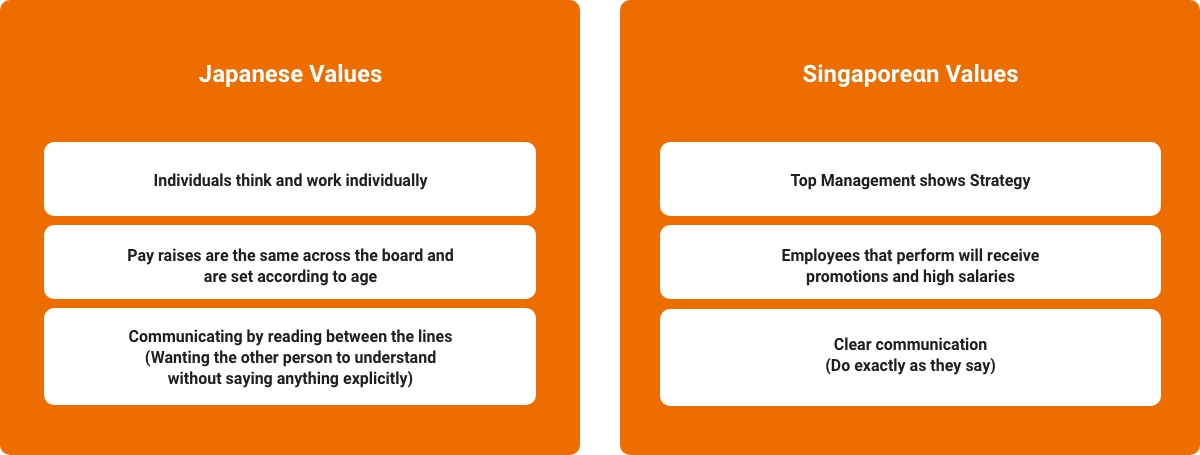

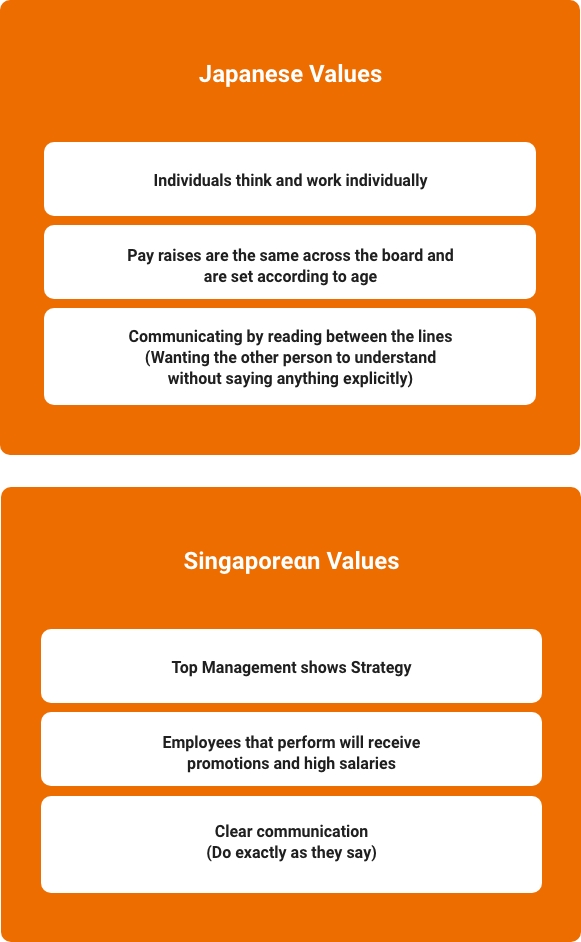

Perspectives and policies that a Singapore branch office should have
- Clarification and sharing of business and management policies
- Design a fair and transparent HR System
- Clear expectation statements and careful feedback


Our Solution
Introducing Solutions
1Clarification and sharing of business and management policies
Knowing your employees’ true intentions and essential organizational issues
Organizational Diagnosis (Survey + Employee Interviews)
Through our unique survey and employee interviews, we visualize the true feelings of employees and essential organizational issues that are difficult for management to recognize.
We will assist you in delving into various issues your organization and its employees are facing, identifying the root causes hidden in the organization, and formulating human resources and organizational management solutions for the issues.
Build the core of the organization from the dialogue between management and employees
Workshop for creating and having a deeper understanding of MVV
Management and employees will share their perspectives and think about “the future of the organization” and “important ideas in the company” through dialogue.
After the management communicates the expectations to the employees, we will work together to develop an axis and vision of the future for the organization, change the mindset of the employees, and make a concrete action plan to realize the future vision.
2Create a HR System that is fair and transparent
Formulation of a policy and talking to employees
Creating a HR System/Support Operations of the System
HR systems vary greatly depending on local customs and the values and behaviors of local personnel.
Based on the know-how we have accumulated through supporting several Japanese subsidiaries, we can help you establish a human resource system that takes advantage of local characteristics and the strengths of Japanese companies. We also provide support for evaluation and evaluator training to ensure that the established system permeates the organization.
3Clear expectations and careful feedback
Rethink your role as a manager and
develop from a mindset of “waiting for instructions” to become a true leader
Awareness as a Manager and Behavior Change Program for Managers
In order to develop into managers who can lead their organizations, we communicate the role expectations of managers, and then shift mindsets with soft skills, such as leadership, and develop hard skills such as logical thinking. We go beyond training by utilizing 360-degree surveys, assessments, and HR technology to visualize the challenges faced by managers and subordinates, and encourage internal awareness.
CONTACT US
We also offer consulting services to solve individual issues for companies.
beyond global provides comprehensive support in the areas of organization and human resources,
such as “visualizing organizational issues,” “formulating organizational policies,” “organizational development,” “various training,” etc.


